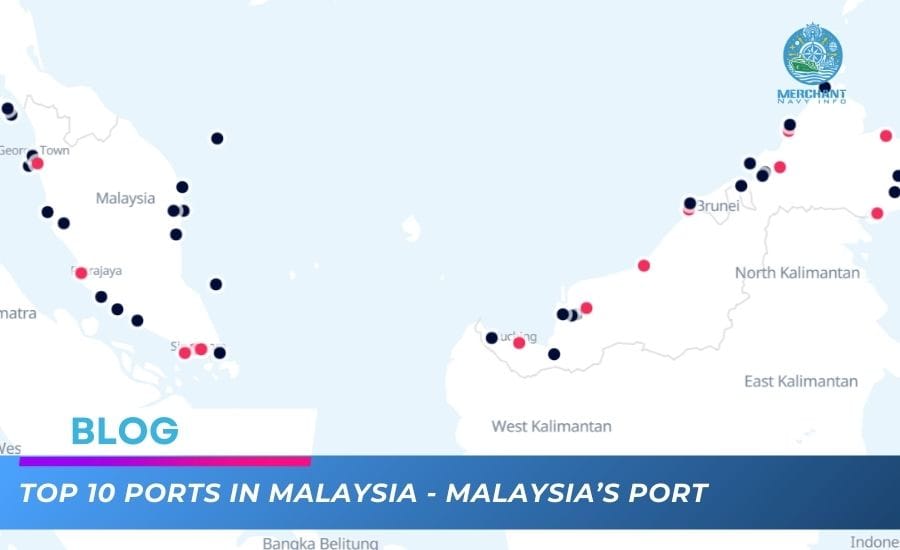
The world’s longest submerged tunnel, running up to 40 meters under the Baltic Sea. Also will connect Denmark and Germany and significantly reduce travel times between the two countries when it opens in 2029. The first tunnel element of the Fehmarnbelt Tunnel was opened by Danish King Frederik X on June 17. This comes four years after construction began in 2020, and it took more than a decade of planning before that. On the Danish side, east of Rodbyhavn. The factory where the 89 giant concrete sections that make up the tunnel are built was completed last year.
It is the largest and most modern production facility of its kind. According to the Danish state-owned company Vermelon A/S, which is leading the project. The 18-kilometer-long tunnel is one of Europe’s largest infrastructure projects, with a construction budget exceeding €7 billion ($7.1 billion). For comparison, the 50-kilometer-long Eurotunnel linking the UK and France. Completed in 1993, also cost the equivalent of the £12 billion ($13.6 billion).
The Eurotunnel
It is longer than the Fehmarnbelt tunnel under Baltic Sea but was dug using a drill press. Rather than by sinking prefabricated tunnel sections. The ferry will be built across the Fehmarnbelt, a strait between the German island of Fehmarn. And also the Danish island of Lolland, and is intended as a replacement for the current Rodby-Puttgarden ferry service. Which carries millions of passengers each year. Currently, the crossing takes 45 minutes by ferry but only seven minutes by train and ten minutes by car.
High-Speed Travel
Officially named the “Fixed Fehmarnbelt”, the tunnel under Baltic Sea is also the longest combined road and rail tunnel in the world. The road will consist of two two-lane highways and two electrified rail tracks separated by level crossings. “Today, if you take a train from Copenhagen to Hamburg. It will take about four and a half hours,” Jens-Ole Kaslund, technical director at Femmern A/S, said in 2022. “It’s the same thing – the trip will take two and a half hours.” “Today, many people travel between the two cities by plane, but in future they will be better off taking the train,” he added.
The same car trip will be about an hour faster than today, taking into account the time saved by not queuing at the ferry. Kasland said that in addition to benefits for passenger trains and cars, the tunnel would also have a positive impact on trucks and trains, as it would create a land connection between Sweden and Central Europe that is 160 kilometres shorter than at present. Currently, traffic between Scandinavia and Germany via Denmark can either be by ferry across the Fehmarnbelt or by a longer-distance route via bridges between Zealand, Funen and Jutland.
Work Is Underway
The project dates back to 2008 when Germany and also Denmark signed a contract to build the tunnel. It then took more than a decade for both countries to pass the necessary legislation. And carry out geotechnical studies and environmental impact assessments. While the process went smoothly on the Danish side, in Germany, several groups, including ferry companies, environmental organisations and municipalities, appealed against the project’s approval, citing unfair competition and environmental and noise concerns. In November 2020, the German Federal Court dismissed the case. “The ruling came with a number of conditions that we had somewhat anticipated and prepared for. They are concerned about how to monitor the environment during construction, such as noise and soil leakage. “We believe that we need to keep our environmental impact as low as possible,” said Henrik Vincentsen, CEO of Femmeln A/S, in 2022.
The Trench In Which The Tunnel Will Be Built
Each section will be 217 meters long almost (about half the length of the world’s known largest container ship), 42 meters wide and also 9 meters high under Baltic Sea. Each will weigh 73,000 tonnes, the same weight as more than 13,000 elephants. The factory will have three halls and six production lines. The sections will be installed just below the seabed, about 40 metres below the surface at their deepest point, and then moved into place using barges and cranes. Putting the sections in place will take about three years. Bigger impact: Up to 2,500 people will be directly involved in the construction project. Michael Svane of the Confederation of the Danish Industry, one of the Denmark’s largest business associations, told CNN in 2022 that he believed the tunnel would also be beneficial for companies outside Denmark.
The Fehmarnbelt Tunnel
It will create a strategic corridor between Scandinavia and Central Europe. Improving rail transport will shift more goods from road to rail and support climate-friendly transport. We see cross-border connections as a tool to generate growth and jobs, not only at local but also national level,” he said. While some environmental groups have expressed the concerns about the tunnel’s impact on the Fehmarnbelt porpoises, Michael Lovendal Kruse of the Danish Society for Nature Conservation believes the project will benefit the environment. “As part of the Fehmarnbelt Tunnel, new natural areas and reefs will be created on the Danish and German sides. Nature needs space, and this will give nature more space,” he says. “But the biggest advantage is climate protection: by crossing belts more quickly, rail becomes a strong competitor to air travel and transporting goods by train is by far the best solution for the environment.










